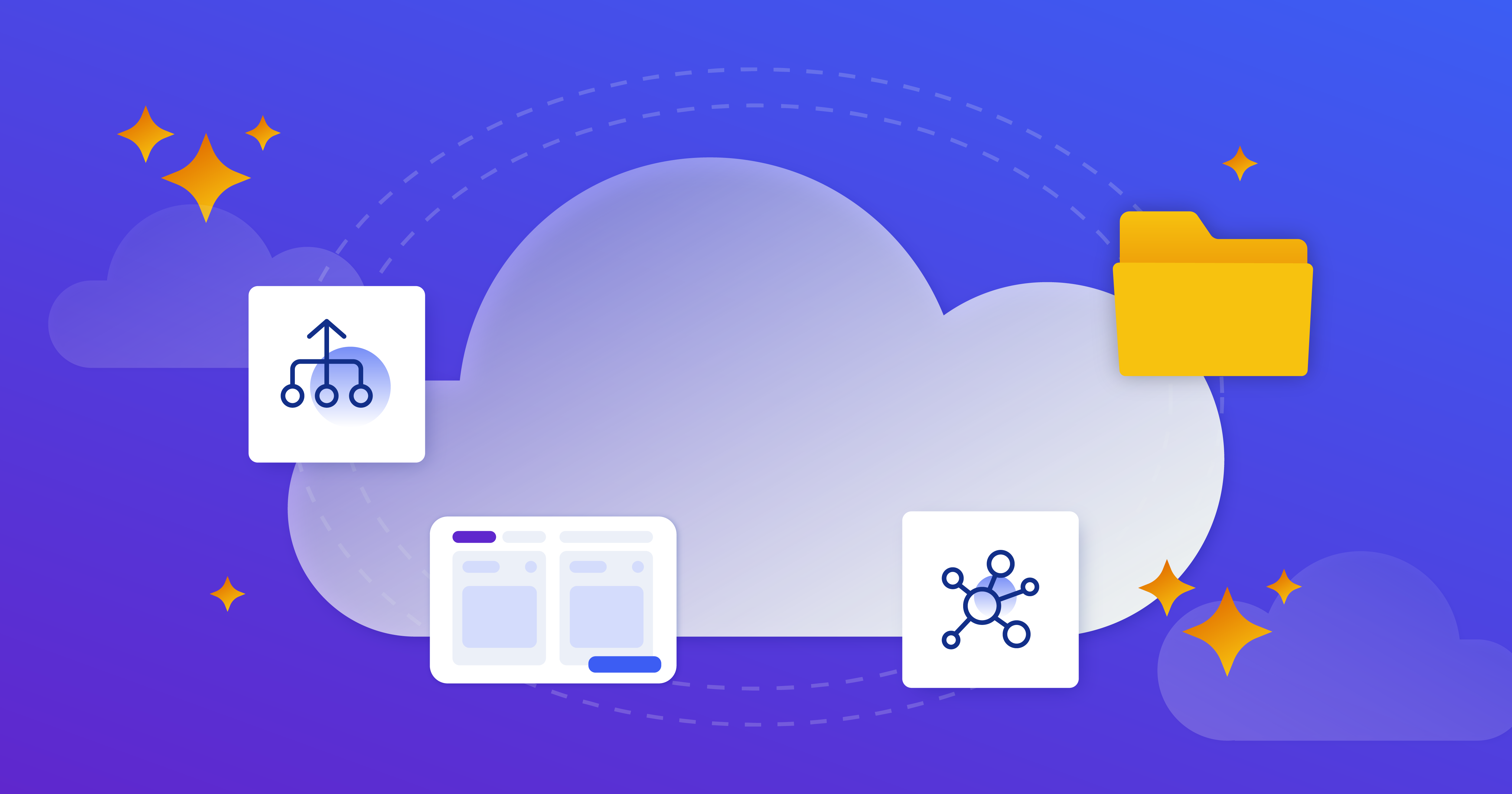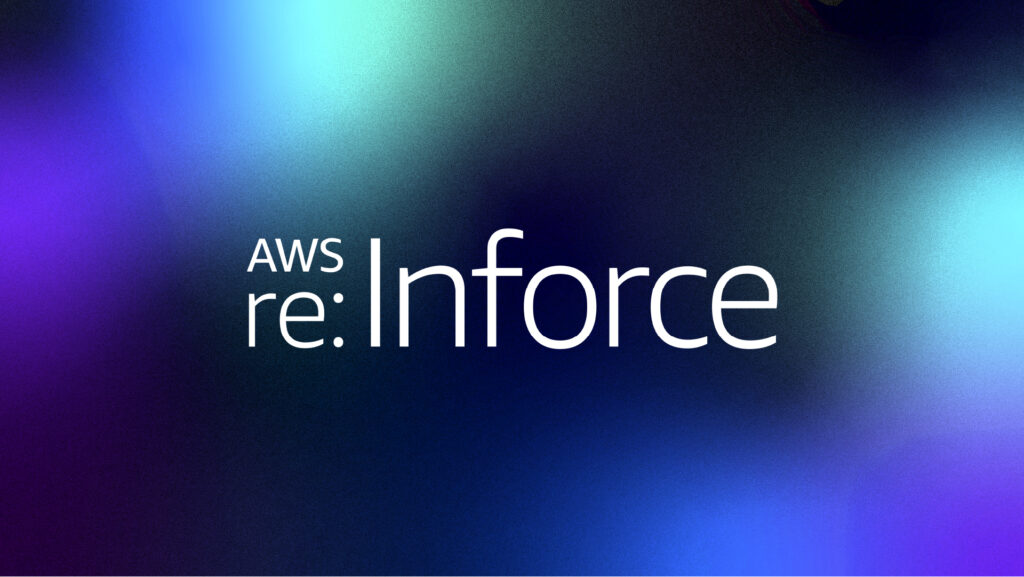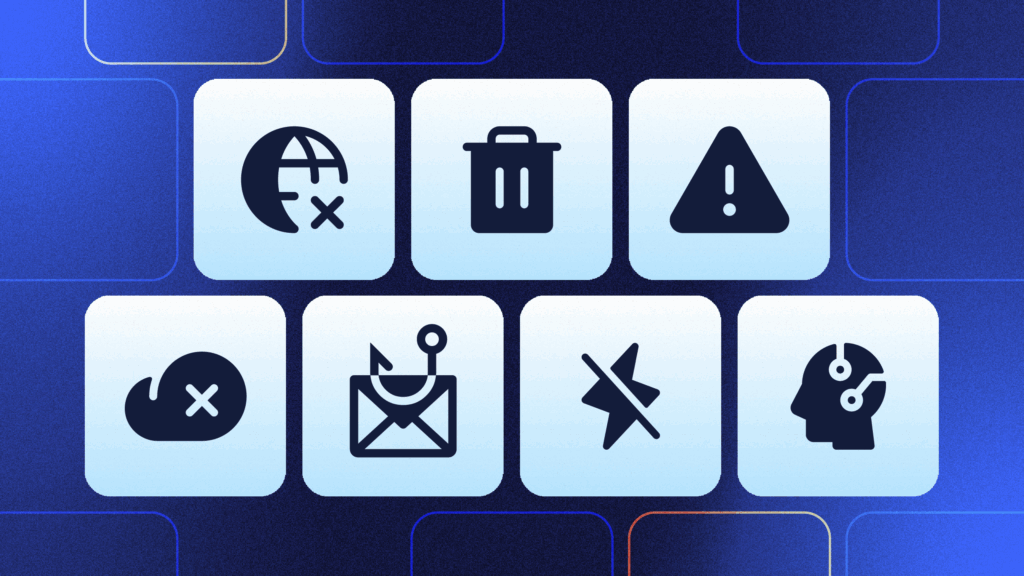In today’s data-rich business environment, backups are a critical concern. Organizations rely on their data to help them reach their business goals, deliver granular insights, and inform business decisions.
Lost or corrupted data could mean anything from a minor inconvenience to a system-wide shutdown. In best practice, a proactive approach is necessary to prevent disaster. You must have a “clean” copy of your system to restore in case of a malware infection, software glitch, accidental deletion, or other human error.
Backup Options
The two main backup options are cloud backup—also known as an online backup and remote backup—or onsite backups. Depending on your business niche, resources, and specific needs, one or the other might be more suitable for you. However, some companies prefer a hybrid approach as it provides redundancy and critical peace of mind.
Let’s take a deep dive into cloud backup and onsite backup. We’ll provide a comprehensive breakdown and comparison of each solution and their core differences, use cases, and what you should choose based on your type of business.
What is Onsite Backup?
Onsite backup, sometimes called local or traditional backup, is a system where data is backed up and stored locally – typically on business premises. Onsite backup data usually includes critical information saved to local media or mobile devices, including tapes or hard disks.
Sometimes automated backup software will perform continuous or scheduled backups without manual input from a user. Unlike cloud servers, the onsite hardware doesn’t have unlimited backup space. Additional hardware will have to be purchased as your system files and data grows.
Onsite/On-Premise Backup: Pros and Cons
Onsite backup, also referred to as on-premise backup, is the process of backing up systems to a local disc, drive, or server. Depending on the data you need to protect, you can choose media types as your backup target.
External drives are convenient and inexpensive, and they can be backed up manually or continually. Most operating systems can be configured to automate the process. However, should you experience a significant power surge or outage, you could lose your backup too.
External Drive, Automated Backups
If you choose this route, it’s critical to ensure a battery backup (BBU) power source. A BBU keeps your systems powered temporarily, giving you enough time to back up and safely shut down computers before any data is lost.
That said, power issues aren’t the only reason systems go down. Fires, floods, or other catastrophic damage to your premises could cause you to lose both your system and your backup.
If all your data and systems fit on a portable drive, that could also be an option for you. On the plus side, this is a very inexpensive way to facilitate backups. On the downside, you’d need to establish a routine around backing up data and be sure to store the drive in a safe place. Backup speed and an automated syncing service should form part of your plan. Small portable drives can be lost or fall into the wrong hands. There’s greater potential for physical damage to the backup drive if you store your files locally.
CDR and Tape
Writable discs like CDR and tape are convenient, inexpensive, and easy to store. However, it might be a more complex and time-consuming matter if you need to restore previous versions of files from them. Usually, file syncing isn’t automated like a cloud sync service. You can easily forget to store specific files to your tape. It’s also much harder to locate individual files on your external drive when you need them.
Plus, with today’s stringent data protection legislation, these local backup media types do not easily allow for records to be individually accessed and destroyed. Under General Data Protection Regulation (GDPR), for example, customers have the right to have their personally identifiable information (PII) removed from company systems. It would be exceedingly difficult to do so with CDRs or tapes. Essentially, if you received such a request, you would need to destroy the entire disc and any previous discs that contained their information. If that sounds like a nightmare in the making—it is!
In summary:
Pros of Onsite Backups:
- Greater control over frequency and storage of backups
- Retrieving your data is quick and straightforward
- Convenient
- Portable
- No ongoing subscription fees
Cons of Onsite Backups:
- Complicated (or impossible) to restore or extract single files
- If your systems go down when you’re not in the building, you might not have access to your backups
- You need to purchase and maintain adequate backup storage media
- You are responsible for ensuring your backups are viable and error-free
- Should you lose your premises, you might also lose your backups
- Backups are more hands-on and labor-intensive using this method
- Drives are susceptible to damage, theft, or human error (such as if an employee overwrites data by mistake)
- Server hardware, if required, is expensive to buy and requires dedicated IT resources to maintain.
- There’s no option of unlimited storage, unlike using online backup services.
Who Should Use Onsite Backups?
Onsite backups are recommended as a hybrid backup and disaster recovery strategy. They can also be the preferred method for solopreneurs, consultancies, freelancers, home-based businesses, and small companies that don’t need to store massive amounts of data.
Magnetic tape and writable CDR backups are used by companies that produce media-rich content or legal practices that archive customer documents for some time.
What is Cloud Backup?
Cloud backups involve sending copies of files or databases to an off-site location to preserve information in the event of system failures or damage to equipment. Lost files can be retrieved and restored with ease.
A third-party backup specialist usually hosts the secondary server and data storage solution. This specialist will charge the backup customer a fee based on the system resources (e.g., storage capacity) or the number of users required. Storage costs can vary depending on the provider.
Cloud backup is generally considered a safer and more convenient backup method than local backup because all files are synced to the cloud. The cloud’s scaling capabilities mean that unlimited files can be saved, and there’s no limit to the backup capacity. The best online backup services are highly secure, using file encryption and multi-factor authentication to protect all your important files off-site.
The backup process can happen seamlessly in the background or be initiated manually via a mobile or desktop app. Multiple computers can be backed up at the same time. And if you need to restore your files, they can be securely downloaded using a private encryption key.
Cloud Backup: Pros and Cons
Cloud backups are the preferred solution for organizations, from small businesses to large enterprises. Smaller companies use cloud backups for convenience and peace of mind. In comparison, larger companies use them as a component of a more comprehensive hybrid backup and disaster recovery strategy.
Pros of Cloud Backups:
Cost Efficiency
Cloud backups are payable through a monthly subscription. You pay only for what you use. Staying on budget is easy because the cost is predictable, and there is no need to outsource IT expertise.
Security
Cloud backups leverage state-of-the-art cybersecurity and access control features, plus, data is encrypted in transit, reducing or eliminating the risk of man-in-the-middle attacks. You can rest easy, knowing your information is safe, secure, and protected from unauthorized access.
Automation
Cloud backups are fully automated and configured according to your precise needs. Daily, hourly, or continuous backups are possible—the latter option is ideal for e-commerce stores, platforms, and sites that generate many customer data.
User-Friendly and Accessible
Cloud backups are fully managed, available and accessible as and when needed. Plus, restoration is so easy that it doesn’t take any special IT knowledge to accomplish it.
Supports Multiple Users
Cloud backups enable team collaboration, file sharing, and multi-user, role-based access. Access to critical files is essential in a world where remote work is the rule rather than the exception. Cloud backups ensure your people have what they need to succeed!
Anytime, Real-Time Access.
Since your data lives in the cloud, it’s accessible to you and your team anytime it’s needed. Data is synced to the cloud immediately on login, meaning your employees have access to the most recent file versions. Therefore high-level collaboration is possible no matter where they are in the world or what device they are using.
Worry-Free Convenience
Automated cloud backups take this critical task off your plate so you can focus on other things. You won’t have to worry about maintaining external drives or running out of space on those drives should your business experience sudden growth. Employees don’t need specialized expertise to access the system, so you won’t have to worry about training or managing complex workflows. Once you configure cloud backups on your system, you probably won’t even know it’s there—but when you need to restore, you’ll be happy it is.
Scalable to Your Needs
It’s not unusual for companies today to experience rapid growth. When that happens, it’s essential to be prepared. If the store or website crashes, the opportunity might not come again. Cloud storage is flexible and scalable to any need. For example, the pricing of Rewind e-commerce plans depends on the number of monthly transactions. Should your business scale either up or down, you could adjust your capacity instantly to accommodate changing data storage needs.
Enables Disaster Recovery
Cloud backups are critical of a comprehensive disaster recovery plan (DRP). Suppose you were to lose your business premises, along with your on-premise servers, computers, and onsite backup drives. In that case, you’d need a remote backup to get back up and running quickly. Without a backup ready to deploy, your systems could face lengthy downtime, resulting in lost revenue and potentially driving customers to your competitors. A cloud backup allows you to quickly restore systems on new devices, ensuring business continuity.
Cons of Cloud Backups:
Requires a Fast and Reliable Internet Connection
As cloud backups are internet-dependent, lack of connectivity could be a problem. Unstable internet can also corrupt files during transfer or make restoration more time-consuming.
Cost
All cloud backup services charge a monthly fee, often connected to usage. Monthly plans range from a few dollars a month for freelancers and small teams to hundreds or even thousands of dollars per month for large enterprise users.
Regulations
Some clients in highly regulated industries like the government, military, and finance operate under strict security regulations. These regulations don’t allow some of their most sensitive materials to be stored in the cloud.
Who Should Use Cloud Backups?
Small businesses prefer cloud backups for convenience, ease of use, and peace of mind. The fast, efficient restoration of individual assets or entire systems in just a few clicks is very appealing. Cloud backups don’t require specialized expertise or additional effort to manage. Therefore, smaller enterprises don’t need to hire and manage expensive in-house IT capabilities.
Cloud backups are also ideal for ecommerce stores and financial services. They provide continuous data backup and the most robust security protections available. Cloud backup providers can offer unlimited storage for unlimited devices so that you can upload files as your business grows and never have to worry about running out of space.
Cloud backups add an extra layer of security for the enterprise, ensuring business continuity no matter what. Cloud backups should also form the basis of a crash plan for small business owners who can’t afford a second of downtime. Whether you own only a single computer or an entire skyscraper full of them, you need a cloud backup plan and instant access to your files when disaster strikes. Cloud backup software can provide exactly that.
Cloud or Onsite: Just Back That Data Up!
It doesn’t matter which backup service you choose. Whether you choose an onsite or cloud backup solution, backing up data is an essential part of daily operations. When the time comes that you need to restore data, you’ll be glad you performed incremental backups to protect your business and recover your lost or deleted files.
Today, businesses need redundant, predictable, and user-friendly solutions they can count on keeping the company up and running. When the goal is to run agile and lean, cloud backup provider Rewind keeps costs low while maintaining the highest levels of service and security available.
Rewind Backup Solutions
Rewind’s backup service offers unlimited online storage and best-of-breed backup services when you need them most. Our online backup service will back up everything you need, from operating system files to critical financial statements.



